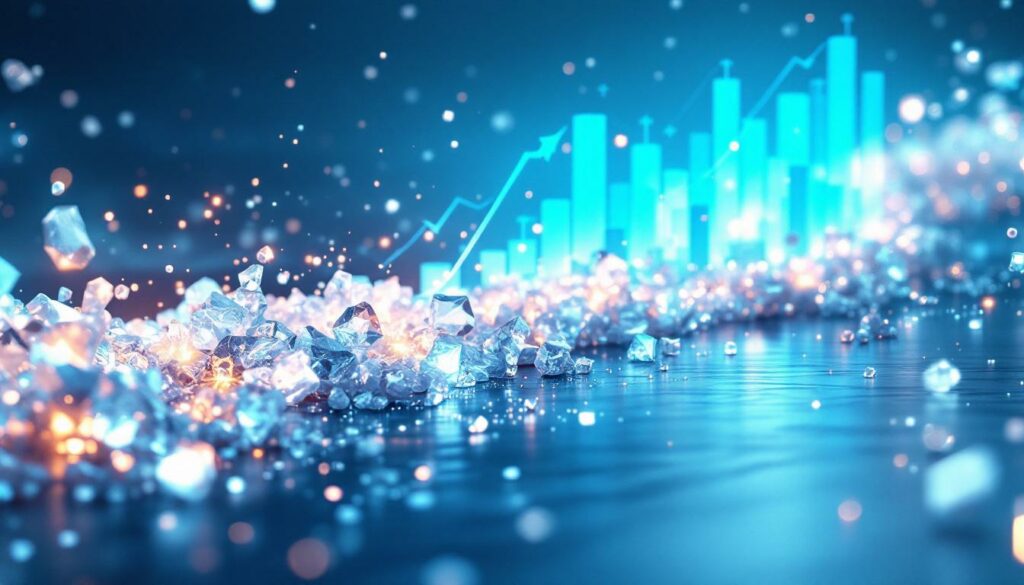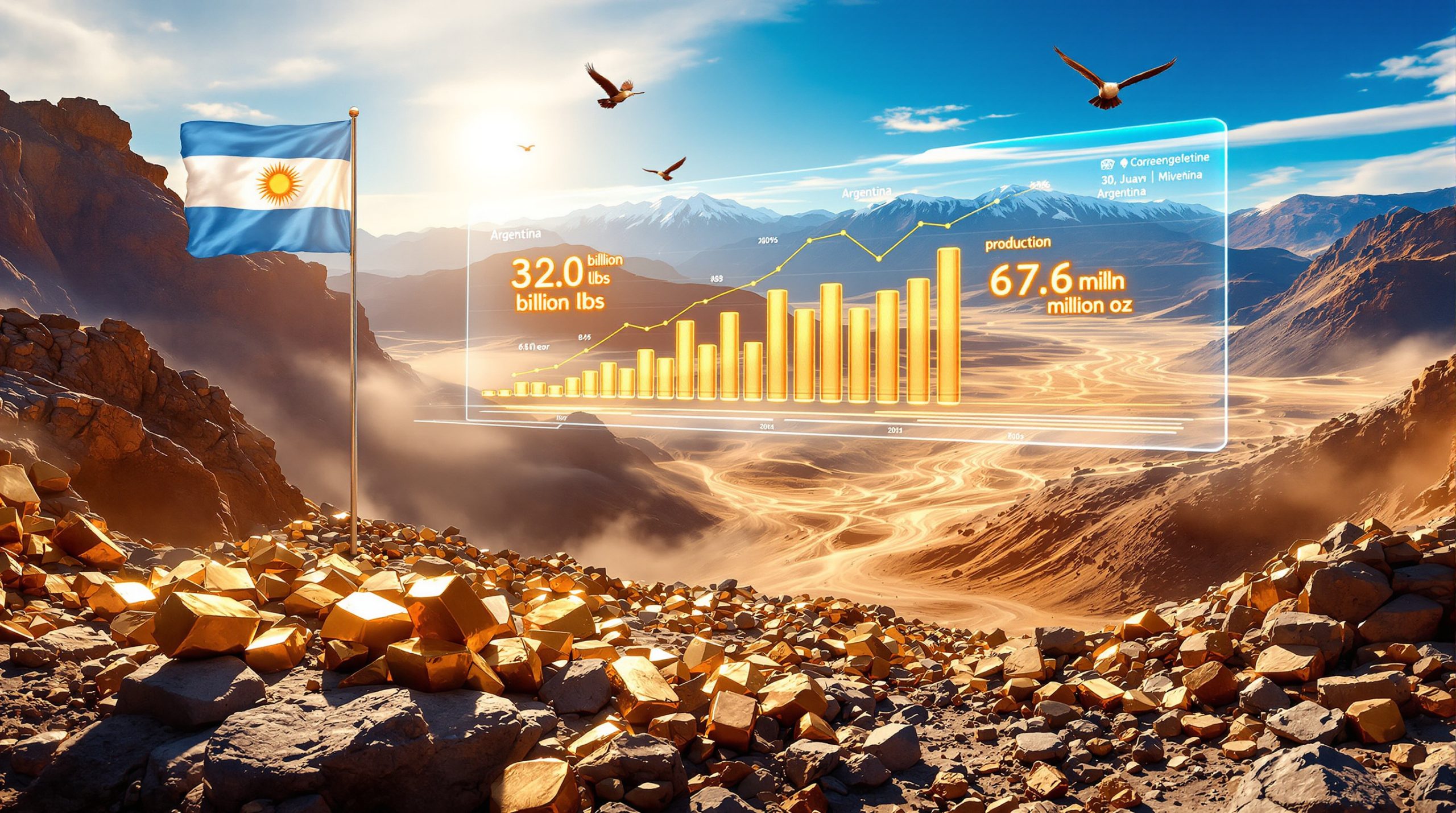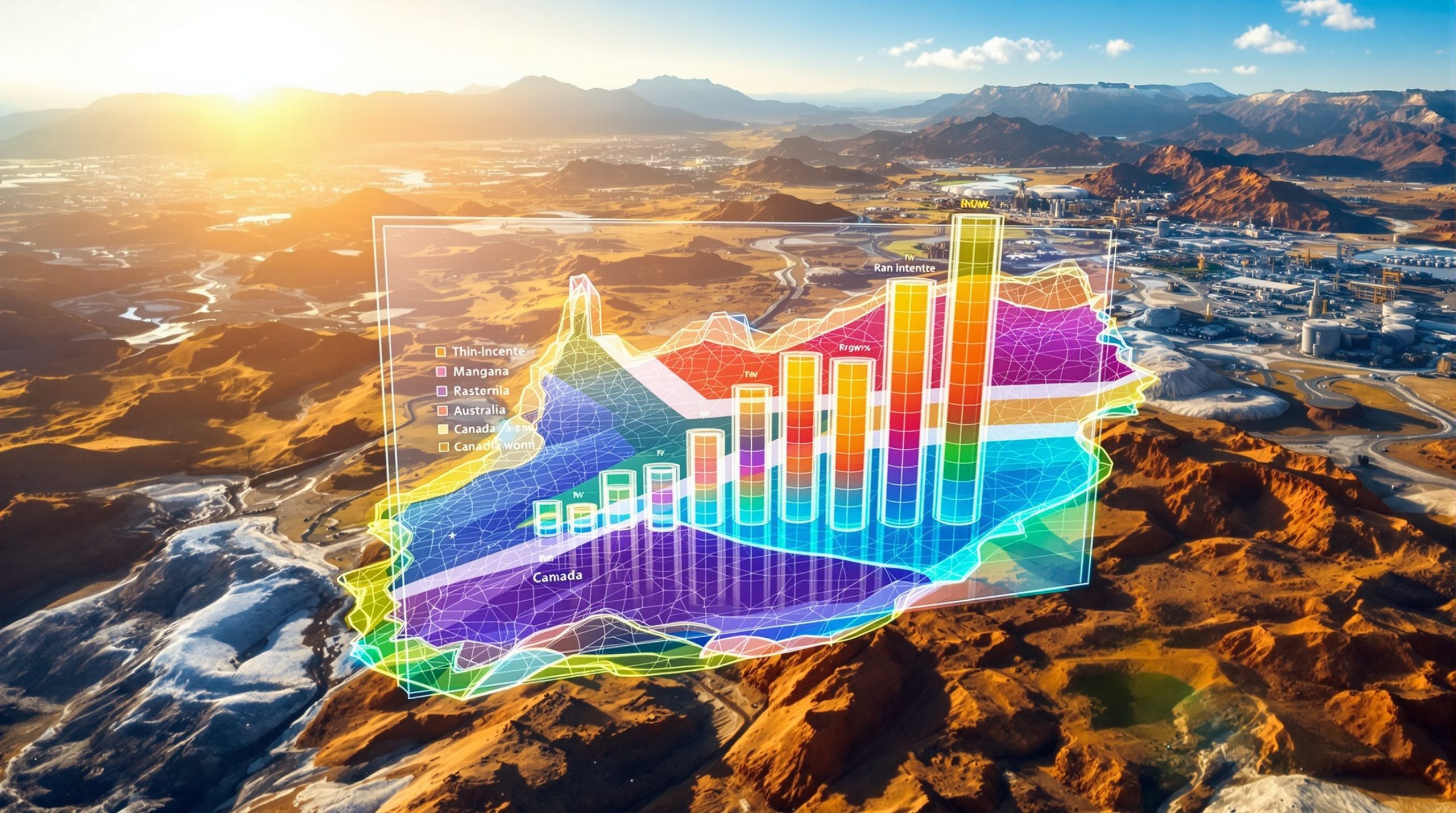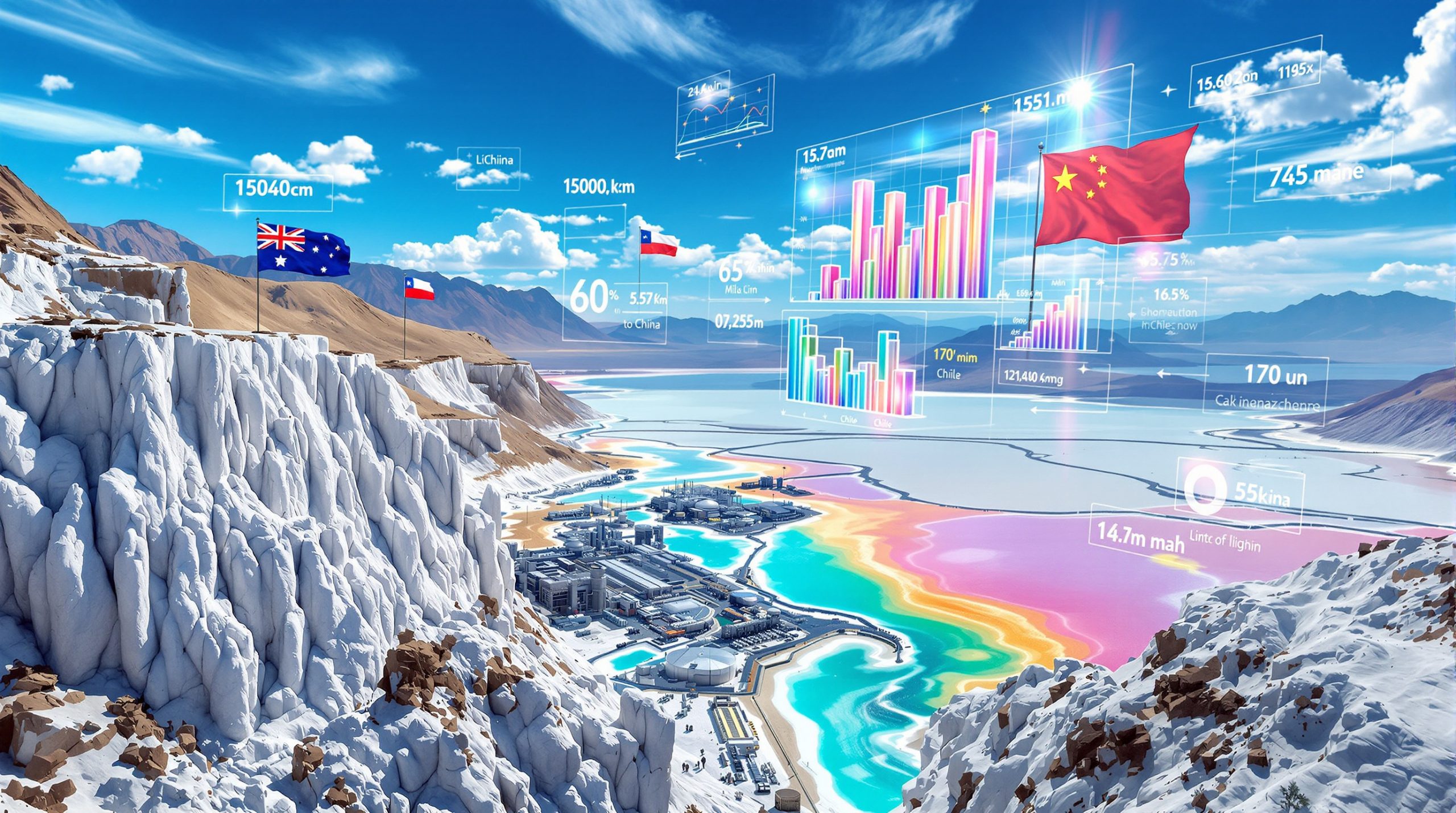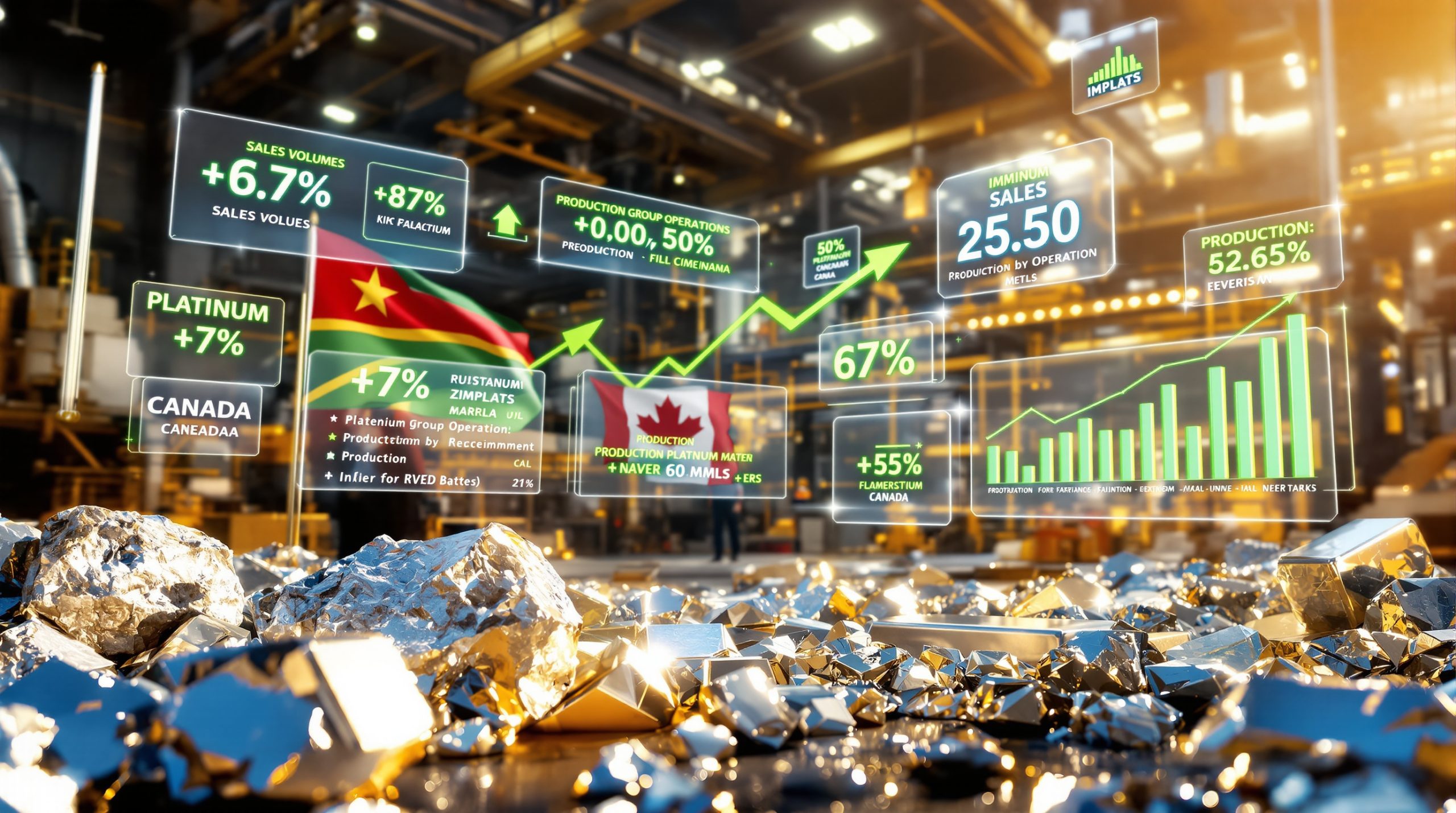What's Driving China's Lithium Hydroxide Export Growth?
China's lithium hydroxide exports showed remarkable momentum in May 2025, reaching an impressive 5,585 metric tons—a substantial 32.3% increase from April. This significant growth comes at a particularly interesting time, as it coincides with a notable 15% drop in average export prices to $12,093 per metric ton. This inverse relationship between volume and price signals important shifts in the global lithium market dynamics.
The surge in export volume despite falling prices suggests Chinese producers are pursuing strategic market share expansion rather than maximizing short-term profit margins. Industry analysts at Shanghai Metal Market (SMM) note this aggressive export push coincides with recently commissioned conversion facilities in Jiangxi and Sichuan provinces that came online in Q1 2025, significantly boosting China's production capacity.
Production Capacity Expansion
The dramatic rise in exports of lithium hydroxide in China can be attributed to several key factors:
- Increased conversion capacity: New hydroxide facilities in China's lithium hubs have boosted production capability by approximately 35,000 tons annually
- Raw material sourcing improvements: Enhanced access to Australian and African spodumene concentrates
- Technical processing advancements: Improved extraction efficiency reducing production costs by 8-12%
- Strategic inventory management: Producers liquidating stockpiles accumulated during earlier price peaks
China's production prowess continues to grow despite global challenges. According to customs data, the country's processing facilities now maintain operating rates above 85%, compared to 72% in 2024.
Demand-Side Factors
Several demand factors are also fueling this export growth:
- Battery production expansion: Major South Korean and Japanese manufacturers are scaling up high-nickel cathode production
- Electric vehicle sales acceleration: Global EV sales increased 18% in Q1 2025
- Energy storage applications: Grid-scale battery installations grew 42% YoY
- Technological shift: Increasing preference for high-nickel cathode chemistries that require lithium hydroxide over carbonate
Industry expert Dr. Lin Wei from the China Nonferrous Metals Industry Association notes, "The production capacity expansions initiated in 2023-2024 are now reaching full operational capability, allowing Chinese producers to meet growing international demand even at lower price points."
Where Is China Exporting Its Lithium Hydroxide?
The distribution pattern of China's lithium hydroxide exports reveals strategic alignments with global battery manufacturing hubs. May 2025 data shows a pronounced concentration toward East Asian markets with established battery gigafactories.
South Korea Dominates Export Destinations
South Korea has emerged as the overwhelming destination for Chinese lithium hydroxide, receiving 3,389 metric tons in May 2025—representing 61% of total exports. This volume marks a dramatic 65.5% increase from April, reinforcing South Korea's position as China's primary customer.
Several factors explain South Korea's dominance:
- Manufacturing capacity: Home to major battery producers including LG Energy Solution, Samsung SDI, and SK Innovation
- High-nickel focus: Korean manufacturers specialize in high-nickel NMC811 and NCA chemistries requiring lithium hydroxide
- Geographical proximity: Reduced shipping times (15 days vs. 30+ to Europe) and logistics costs
- Supply chain integration: Long-term contracts and strategic partnerships with Chinese suppliers
The LGES Ulsan facility expansion, completed in April 2025, added 20GWh of production capacity specifically for high-nickel cells, directly driving increased hydroxide demand.
Japan Maintains Stable Import Levels
Japan imported 1,740 metric tons in May, accounting for 31.2% of China's total exports. While this volume remained relatively flat month-over-month, it represents Japan's continued importance as the second-largest destination.
Japanese imports are characterized by:
- Consistent procurement patterns: Stable demand based on long-term contracts
- Quality specifications: Stringent requirements for battery-grade lithium refinery material (minimum 56.5% LiOH)
- End-user focus: Primarily supplying Panasonic-Tesla supply chain and Toyota's hybrid/EV programs
- Value-added processing: Further refining for specialized battery applications
Emerging Markets and Diversification
The remaining 7.8% of exports were distributed across various markets, showing early signs of geographical diversification:
- European destinations: Growing shipments to Poland, Hungary, and Sweden
- North American market: Emerging demand from U.S. battery plants (though limited by tariff considerations)
- Southeast Asian processing hubs: Small but growing volumes to Malaysia and Thailand
This diversification trend is expected to accelerate as new battery manufacturing facilities come online in Europe and North America through 2025-2026.
How Are Lithium Hydroxide Prices Trending?
The lithium hydroxide market is experiencing notable price compression, with May 2025 average export prices dropping to $12,093 per metric ton—a 15% decline from April. This price trend continues the broader correction that began in late 2024 after hydroxide prices peaked at over $25,000/mt in Q3 2023.
Factors Driving Price Reduction
Multiple market forces are contributing to the current price environment:
- Supply expansion outpacing demand: New conversion capacity coming online throughout the lithium triangle
- Feedstock availability: Improved access to spodumene concentrates with Australian and African mines increasing production
- Processing efficiency: Technical innovations reducing conversion costs by approximately 8-12%
- Global competition intensification: New market entrants from Argentina Lithium Brine Insights and Chile challenging China's processing dominance
- Inventory positions: Strategic destocking by major producers seeking to maintain market share
According to SMM analysis, the combination of expanded production capacity and technical efficiencies has created a temporary oversupply situation, putting downward pressure on prices despite growing absolute demand.
Strategic Pricing Behavior
The price decline coupled with volume growth suggests strategic positioning by Chinese producers:
"Chinese converters appear to be leveraging their cost advantages to expand market share, even at the expense of near-term margins," notes industry analyst Zhang Wei from Benchmark Mineral Intelligence.
This approach reflects:
- Long-term market positioning: Securing customer relationships during temporary oversupply
- Scale economies: Operating at higher utilization rates to reduce per-unit production costs
- Vertical integration benefits: Access to captive mine production reducing exposure to spot market prices
- Technological leadership: Maintaining technical engagement with battery producers developing next-generation cathodes
Price-Volume Relationship Analysis
The inverse relationship between price and volume (price down 15%, volume up 32.3%) indicates a period of elastic demand. Battery manufacturers appear to be:
- Capitalizing on lower prices to build strategic inventories
- Accelerating production plans while input costs are favorable
- Negotiating new long-term supply agreements at advantageous terms
- Expanding into new battery applications previously constrained by high material costs
The average spot-contract differential has widened to 8-12%, indicating producers are maintaining higher margins with established customers while using competitive pricing to secure new business.
What's Happening with China's Lithium Hydroxide Imports?
While China's exports surge, its import volumes tell an equally compelling story about the evolution of global lithium supply chains. May 2025 data shows lithium hydroxide imports contracted to just 842 metric tons—a substantial 34% decrease from April.
Import Volume Contraction Analysis
This significant reduction in imports reflects several key developments:
- Domestic capacity sufficiency: Chinese conversion facilities now meeting internal demand
- Vertical integration: Major Chinese producers securing upstream mineral assets
- Processing technology leadership: Advanced conversion methods improving yields from lower-grade feedstocks
- Economic advantages: Domestic production increasingly cost-competitive with imports
The decline is particularly notable considering China was a net importer of lithium compounds until late 2023. According to customs data analyzed by SMM, imports have fallen 68% from their peak in Q2 2023.
Import-Export Balance Transformation
The May 2025 data reveals China's transformed position in global lithium trade:
- Export-to-import ratio: 6.6:1 (up from 3.3:1 in April 2025)
- Net export position: 4,743 metric tons (exports minus imports)
- Year-over-year shift: From near-parity in May 2024 to clear net exporter status
This transition reflects China's strategic investments in processing capacity and raw material security. As recently as 2022, China imported more lithium compounds than it exported, but substantial investments in domestic conversion facilities have reversed this pattern.
Import Sources and Quality Considerations
While volumes have decreased, the composition of China's imports reveals quality and specialization factors:
- Chilean material: Premium battery-grade hydroxide for specialized applications
- Argentine imports: Primarily from newer brine operations with competitive production costs
- Australian small-volume shipments: Highly specialized grades for advanced battery research
"China's selective import strategy now focuses on specific grades and qualities rather than volume," explains Dr. Chen from the China Nonferrous Metals Industry Association. "This represents a maturation of the domestic supply chain."
Why Is Lithium Hydroxide Trade Important for Global Battery Supply?
The lithium hydroxide trade flows between China and key Asian manufacturing hubs represent more than simple commodity exchanges—they form the backbone of the global transition to electric mobility and renewable energy storage.
Critical Role in High-Performance Batteries
Lithium hydroxide has become increasingly essential to advanced battery production for several technical reasons:
- Cathode compatibility: Required for high-nickel cathode materials (NMC811, NCA) that deliver greater energy density
- Thermal stability: Enables better performance in batteries operating at higher voltages
- Cycling performance: Contributes to longer battery lifespan in demanding applications
- Fast-charging capability: Supports higher C-rate charging protocols in premium EVs
Dr. Xu Qiang from Tsinghua University's Battery Research Center explains: "Lithium hydroxide's superior thermal stability makes it indispensable for next-generation batteries exceeding 400 Wh/kg energy density. These high-performance cells simply cannot be manufactured with carbonate-based precursors."
Supply Chain Implications
The movement of lithium hydroxide between countries creates complex interdependencies:
- Regional specialization: China focusing on conversion, Korea and Japan on cell manufacturing
- Technical knowledge transfer: Material specifications driving processing innovations
- Quality standardization: Export requirements establishing global benchmarks
- Supply security concerns: Critical material concentration risks for battery manufacturers
A table comparing the relative advantages in the supply chain illustrates these dynamics:
| Supply Chain Element | China's Position | Import Markets (Korea/Japan) |
|---|---|---|
| Raw Material Access | Strong (African/Australian partnerships) | Limited (Reliant on processors) |
| Conversion Capacity | Dominant (38% global share) | Minimal (Focused downstream) |
| Technical Expertise | High (Processing efficiency) | High (Cell design/manufacturing) |
| End Market Access | Growing (Domestic EV boom) | Established (Global OEM relationships) |
| Cost Position | Advantaged (Scale economies) | Challenged (Material import dependence) |
Battery Chemistry Evolution
The growth in lithium hydroxide trade also reflects fundamental shifts in battery technology:
- Moving beyond LFP: While lithium iron phosphate (LFP) batteries can use carbonate, high-nickel chemistries require hydroxide
- Energy density race: Each generation of cells demands more specialized precursor materials
- Application diversification: Different battery types optimized for various use cases (performance EVs vs. energy storage)
- Manufacturing process improvements: Advanced dry electrode techniques requiring specific lithium compounds
This evolution creates a technical dependency on hydroxide that is reflected in the trade statistics, with export volumes growing 142% year-over-year compared to May 2024.
How Does This Trend Compare to Historical Patterns?
China's current lithium hydroxide export surge represents a significant departure from historical trade patterns, reflecting both structural market changes and cyclical industry factors.
Year-over-Year Comparison
When compared to previous years, May 2025's export performance reveals dramatic growth:
- May 2025 vs. May 2024: 142% volume increase (5,585 mt vs. 2,307 mt)
- May 2025 vs. May 2023: 278% volume increase (5,585 mt vs. 1,477 mt)
- Price evolution: 52% decrease from May 2024's average of $25,193/mt
This extraordinary growth trajectory illustrates China's transformed position in global lithium markets. What began as modest exports primarily to regional partners has evolved into a dominant global supply position.
Market Evolution Indicators
Several key indicators highlight the evolutionary changes in China's lithium hydroxide trade:
- Capacity utilization shift: From 65% in 2023 to over 85% in 2025
- Export destination diversification: From 90% East Asia in 2023 to emerging European volumes
- Domestic consumption ratio: From 78% domestic use in 2023 to approximately 60% in 2025
- Value-chain positioning: From primarily raw material processor to integrated battery material supplier
Industry experts note these shifts represent both China's strategic investments and market-driven adaptations to changing battery chemistry requirements.
Seasonal and Cyclical Patterns
Beyond the long-term growth trend, lithium hydroxide exports show distinct seasonal patterns:
- Q1 slowdown: Typically reduced volumes during Lunar New Year production breaks
- Q2-Q3 acceleration: Peak shipping season aligning with Northern Hemisphere automotive production
- Q4 inventory positioning: Year-end adjustments based on contract negotiations
The May 2025 data aligns with the typical Q2 acceleration but at unprecedented volume levels, suggesting both seasonal patterns and structural growth are combining to drive record exports of lithium hydroxide in China.
From Import Dependency to Export Leadership
Perhaps most significant is China's transition from import dependency to export leadership:
"In just 36 months, China has transformed from being a net importer of lithium hydroxide to becoming the world's dominant supplier," observes lithium market specialist Dr. Wang from Beijing University of Technology.
This reversal reflects:
- Strategic investments: Targeted development of conversion capacity
- Raw material security: Acquisition of upstream mining assets in Australia, Africa, and South America
- Technical advancement: Proprietary processing methods improving yields and quality
- Policy support: Government initiatives prioritizing battery supply chain development
The historical import-export balance chart would show a dramatic crossover point in Q3 2024, when exports first consistently exceeded imports, creating the foundation for today's 6.6:1 export-import ratio.
What Are the Future Outlook and Predictions?
The trajectory of China's lithium hydroxide exports through the remainder of 2025 and beyond will be shaped by multiple intersecting factors across supply, demand, and geopolitical considerations.
Near-Term Volume Projections
Based on current production capacity and market conditions, industry analysts project:
- Q3 2025 exports: Expected to reach 6,200-6,800 metric tons monthly (+10-22% from May)
- Full-year 2025: Projected total exports of 70,000-75,000 metric tons (+85% YoY)
- Regional distribution: South Korea's share likely to increase to 65-68% by year-end
These projections assume continued capacity utilization above 85% and ongoing demand growth from battery manufacturers.
Price Forecast Scenarios
The price outlook remains subject to multiple variables, with analysts offering several scenarios:
Base case scenario: Prices stabilize around $11,500-12,500/mt through Q3 2025, with modest recovery in Q4
- Supported by balanced supply-demand fundamentals
- Assumes no major mine disruptions or policy changes
Bullish case: Prices rebound to $14,000-15,000/mt by Q4 2025
- Triggered by accelerated EV adoption exceeding forecasts
- Potential supply disruptions in Australia or South America
Bearish case: Further compression to $9,500-10,500/mt
- Driven by continued production capacity expansion
- Weakened demand from potential EV market slowdown
Disruptive Factors to Monitor
Several factors could significantly alter these projections:
- Resource nationalism: Emerging producer countries (Chile, Argentina) implementing export restrictions
- Trade policies: Potential tariffs or domestic content requirements in major markets
- Technical substitution: Battery chemistry innovations reducing hydroxide intensity
- Supply chain regionalization: New conversion capacity outside China reducing export demand
Industry experts highlight energy transition policies as particularly influential, with government incentives for EV adoption directly impacting hydroxide demand through the battery supply chain.
Structural Market Evolution
Looking beyond immediate forecasts, the lithium hydroxide market is expected to undergo several structural changes:
- Geographical diversification: Processing capacity expanding in Australia Lithium Innovations sites, Chile, and North America
- Vertical integration: Battery manufacturers securing direct lithium supply chains
- **Quality stratification
Want to Stay Ahead of the Next Major Mineral Discovery?
Discovery Alert's proprietary Discovery IQ model instantly identifies significant ASX mineral discoveries, providing actionable insights for both short-term traders and long-term investors. Explore historic returns of major discoveries and begin your 30-day free trial at Discovery Alert's discoveries page to position yourself ahead of the market.
